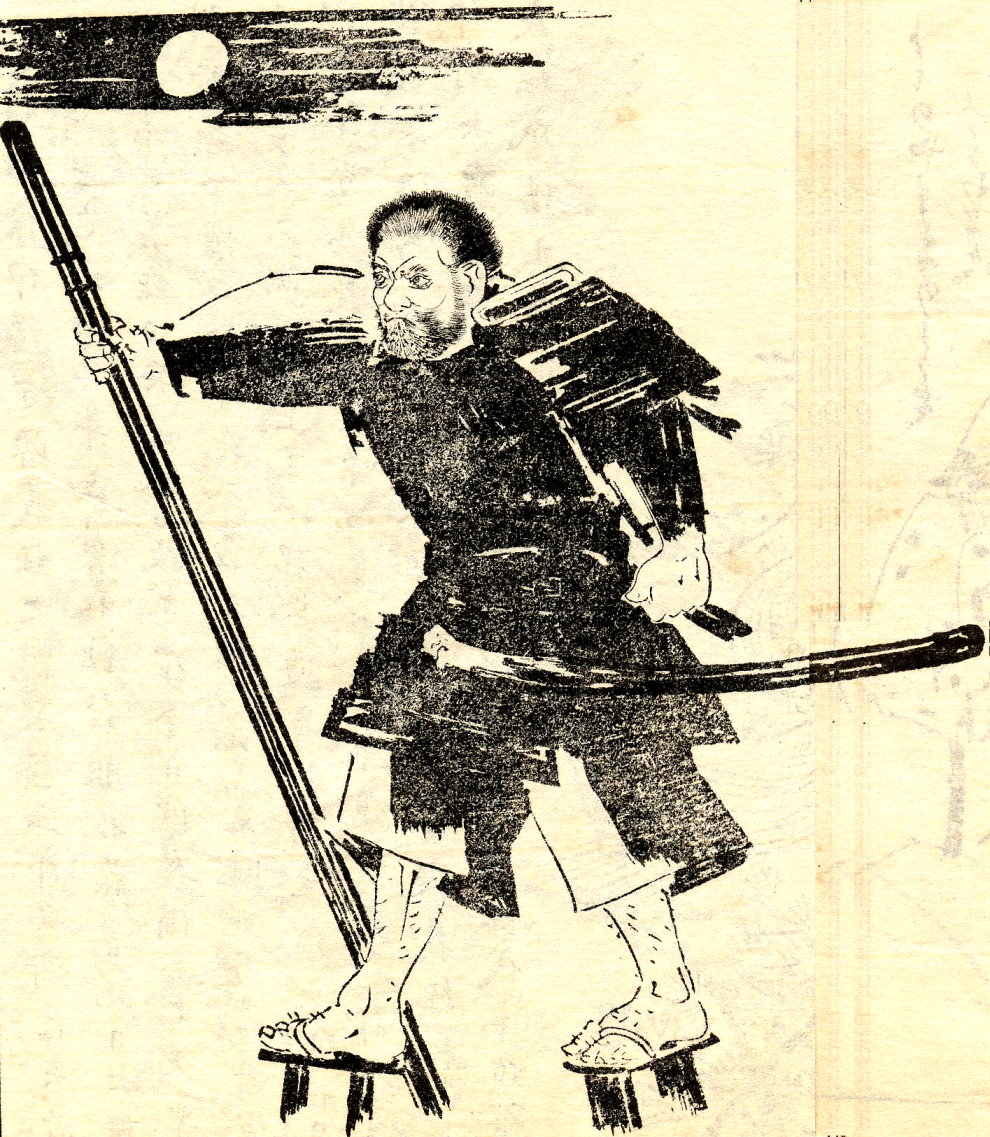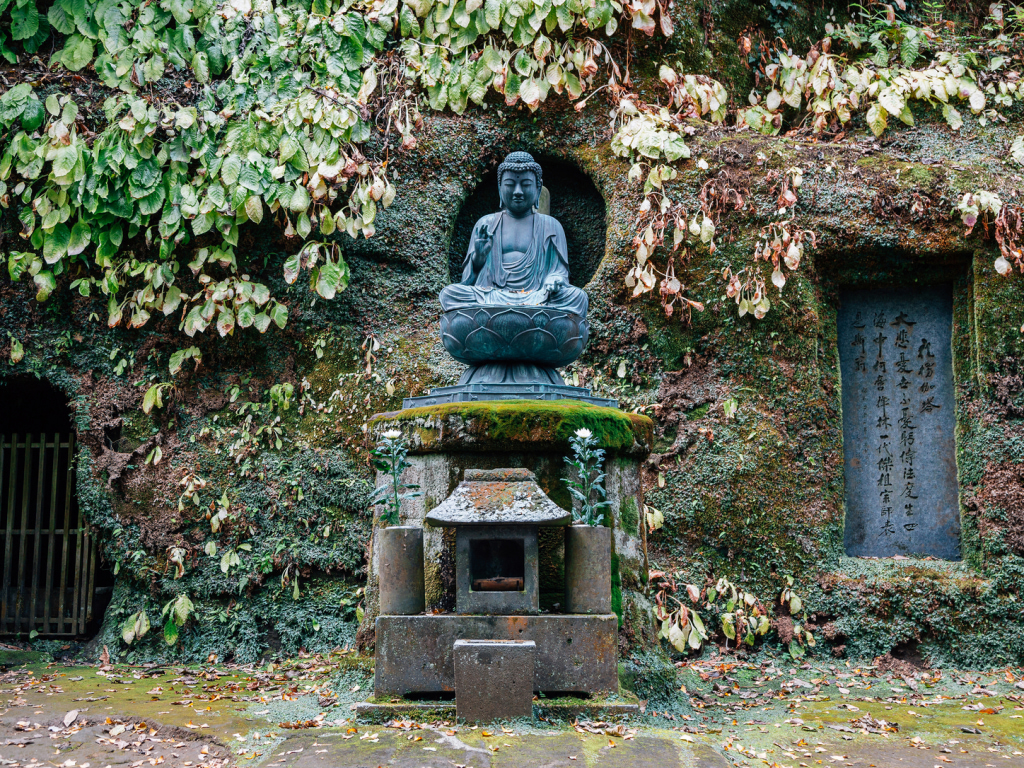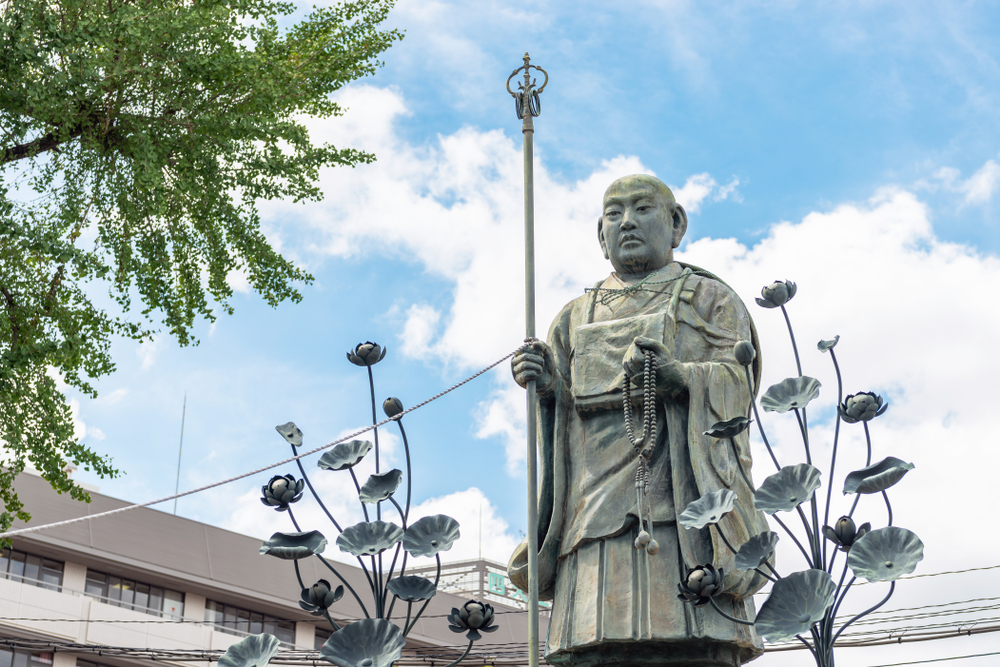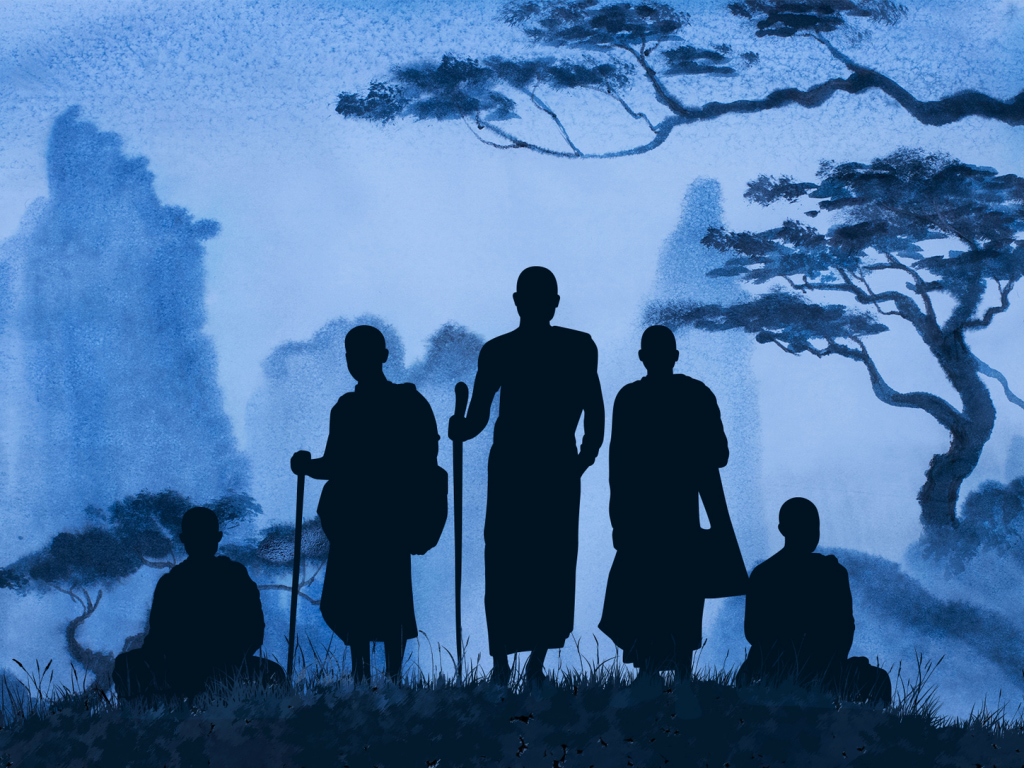
Source: Wikimedia Commons
1. Benkei – The Giant Warrior Monk
As a young boy, Saito Musashibo Benkei (1155–1189) joined many Buddhist monasteries, which at the time were half-universities/half-military-schools, where he was taught to fight with the naginata, a bladed pole weapon. It was probably the only thing the monks had that didn’t look comically small in his hands, as Benkei was apparently 2m tall by the time he was 17.
Later, Benkei became a mountain hermit to contemplate the meaning of life. He ultimately decided that life would be better if bad people had fewer weapons so he spent years fighting any samurai he deemed unworthy and taking away their katanas. He collected 999 of them until he was finally defeated by legendary warrior Minamoto Yoshitsune. Benkei then swore loyalty to the man who beat him and both of them fought in many battles together until Yoshitsune was betrayed and Benkei died in a hail of arrows while protecting him. When his body was discovered, it was apparently still standing upright.
2. Honmyokai – The Living Mummy
A big part of monastic life is denying yourself pleasures in order to get closer to God. Well, Honmyokai really took that to heart and ran with it. He was a 17th-century monk practicing asceticism in the mountains of Yamagata Prefecture. His goal was to transform his body into Buddha-like perfection… by mummifying himself.
The practice is known in Japan as sokushinbutsu and it involved eating resin, seeds, berries and other things that would gradually eliminate all the fat from the body, which is what Honmyokai did. Then, he started reducing his water intake until he felt the end was near. That’s when the monk locked himself in a stone chamber and eventually died while meditating. When his body was discovered, it was perfectly preserved, just like an Egyptian mummy, making it one of the few successful sokushinbutsuin in Japanese history.

Tokei-ji Temple | Source: Shutterstock
3. Kakusan-ni – The Feminist Nun
In Buddhism, female equivalents of monks (bhikkhuni/bikuni/ama) have existed since the religion first took root in Japan. But not all of them entered the monastic life voluntarily. Widows of powerful lords, for example, were expected/forced to join a nunnery upon their husband’s death, which was the case with Kakusan-ni, wife of Hojo Tokimune, who at one time ruled all of Japan.
After her husband’s passing in 1284, Kakusan-ni founded and became head of the Tokei-ji temple in Kamakura where she proceeded to make the best of her new life. She started by turning the temple into a sanctuary for battered wives and forbidding any man from setting foot there. This was possible due to the close alliances that Kakusan-ni cultivated with the ruling class. Over the next few centuries, Tokei-ji became so powerful that they not only sheltered women but also negotiated divorces with their husbands, thus earning Tokei-ji the nickname “the Divorce Temple.”
4. Genno Shinsho – The Stone-Splitting Exorcist
Stories of malicious spirits have been told in Japan for centuries, but one among them stands out: the tale of the nine-tailed fox that traveled the world, taking the form of beautiful women. In Japan, the spirit came to be known as Tamamo-no-Mae. It’s also where it eventually pivoted its strategy and possessed a rock that emitted deadly, poison gas.
Enter Genno Shinsho. He was a 14th-century monk who, as legend goes, performed exorcisms to silence all of the frogs at Sugatami Pond and helped a distressed serpent deity give birth. So what was a little poisonous fox-stone to him?
After reading Buddhist sutras over the Tamamo stone, Genno split it with a hammer, releasing the spirit from within. Then, he held a memorial service so the spirit could finally rest in peace.

Source: Shutterstock
5. Kukai – The Miracle Monk
Kukai (774–835) wasn’t just a monk. He was also an artist, engineer, civil servant, poet, sculptor; he did it all. Among other things, he headed the restoration project of the largest reservoir in Japan and started a private school opened to all social classes. But it’s all the miracles surrounding him that made Kukai a legend.
When he was deciding whether to become a Buddhist monk, he threw himself off a cliff but was reportedly saved by a group (flock?) of flying saints. Then, when he was ordained as a priest, the morning star apparently flew into his mouth. Once fully ordained, Kukai became famous for being able to find sources of fresh water wherever he was, exorcise any demon and, in some versions, even fly. Some Buddhists don’t believe he died but rather that he achieved enlightenment and can still be found somewhere on Mount Koya because no theory sounds too outrageous when Kukai is involved.









